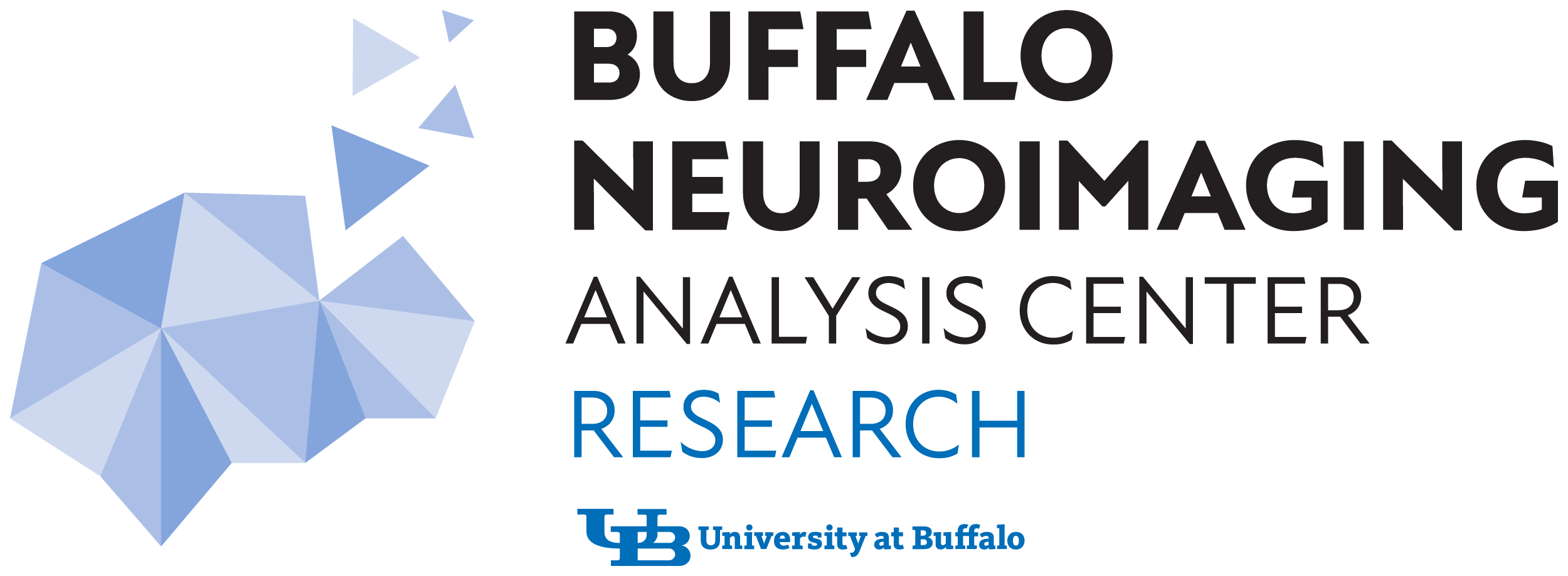Academic research techniques can often be difficult to translate into clinical settings. In particular, the types of pre-standardized, time-consuming MRI exams used research are rarely used in clinical routine imaging. The Buffalo Neuroimaging Analysis Center (BNAC) is dedicated to solving this disparity, and is an international leader in developing imaging methods that work accurately and reliably with real-world clinical data and can be translated to the bedside. BNAC has published numerous clinical trial and research articles on real-world translational imaging approaches in MS and other neurological disorders.
Progressive loss of brain tissue, called brain atrophy, is a normal part of aging, but multiple sclerosis (MS) accelerates the process. Such atrophy is a critical indicator of physical and cognitive decline in MS, but because measuring brain atrophy is expensive and complicated, it is only done primarily in research settings. BNAC is working to change that with tools including a new algorithm called the Neurological Software Tool for Reliable Atrophy Measurement in MS, or NeuroSTREAM. NeuroSTREAM simplifies the calculation of brain atrophy based on data from routine MRI and compares it with other scans of MS patients in the database. Over the past decade, BNAC developed one of the world’s largest databases of MRI of individuals with MS in clinical routine, consisting of 30,000 brain scans with data from about 10,000 MS patients. Being able to routinely measure how much brain atrophy has occurred and compare it directly with this database will likely help physicians to predict better how a patient’s disease will progress. It may also provide physicians with more information about how well MS treatments are working in individual patients.
At the 8th Joint ACTRIMS-ECTRIMS Meeting MS Virtual 2020, BNAC presented a study that investigated the feasibility of thalamic atrophy measurement using artificial intelligence (AI) in patients with multiple sclerosis. DeepGRAI (Deep Gray Rating via Artificial Intelligence) is a multi-center (31 USA sites), longitudinal, observational, real-world, registry study that will enroll 1,000 relapsing-remitting multiple sclerosis patients. The pre-planned interim results were based on 515 patients who were followed for an average of 2.7 years. DeepGRAI provided feasible thalamic volume measurement on clinical-quality T2-FLAIR images. The relationship between thalamic atrophy and physical disability was similar using DeepGRAI T2-FLAIR and standard high-resolution research 3D-T1 WI approaches. The study confirmed the value of DeepGRAI for real-world thalamic volume monitoring, as well as quantification on legacy datasets without research-quality MRI.
More broadly, as part of UB’s prestigious NIH Clinical and Translational Science Award (CTSA), the BNAC, Clinical and Translational Science Institute (CTSI), and Center for Biomedical Imaging (CBI) are leading a multi-disciplinary group to create a shared platform for automated image collection and quantitative analysis in real-world clinical routine setting. This system will enable clinical researchers to quickly and easily access otherwise latent data answering clinical and fundamental neuroimaging questions. As part of this project, BNAC’s and Center for Biomedical Imaging’s PhD student, Alexander Bartnik, under the supervision of Michael G. Dwyer, BNAC’s Neuroinformatics Director and CBI Director of Computational Analysis is working to develop key imaging and analysis ontologies that will facilitate automated connection of incoming scan types with appropriate methods of image analyses in a manner that standardizes the multitude of data and formats used across national CTSI peers. As a proof-of-concept, the BNAC’s DeepGRAI thalamic AI volumetry tool has been incorporated into the platform to facilitate fully automated thalamic volumetry via a simple PACS relay that can be easily integrated with clinical routine scanning protocols.
For more information about real-world translational imaging endpoints, click here.
FEATURED RECENT REAL-WORLD TRANSLATIONAL IMAGING APPROACHES STUDIES
- Zivadinov R, Tranquille A, Reeves JA, Dwyer MG, Bergsland N. Brain atrophy assessment in multiple sclerosis: technical- and subject-related barriers for translation to real-word application in individual subjects. Expert Rev Neurother 2024;1-16. [Open Article]
- Zivadinov R, Bergsland N, Jakimovski D, Weinstock-Guttman B, Lorefice L, Schoonheim MM, Morrow SA, Picone MA, Pardo G, Zarif M, Gudesblatt M, Nicholas JA, Smith A, Hunter S, Newman S, AbdelRazek MA, Hoti, I, Riolo J, Silva D, Fuchs TA, Dwyer MG, Benedict RHB. Thalamic atrophy and dysconnectivity are associated with cognitive impairment in a multi-center, clinical routine, real-word study of people with multiple sclerosis. Neuroimage Clin 2024;42:103609.[Open Article]
Contact Our Team Today
Part of BNAC’s mission is to help share our tools and experience with our colleagues and other industry partners. If you need help with real-world translational imaging approaches in your research or clinical trial work, please reach out to discuss how we can assist. Our group brings decades of experience and expertise to every collaborative study and service partnership.

